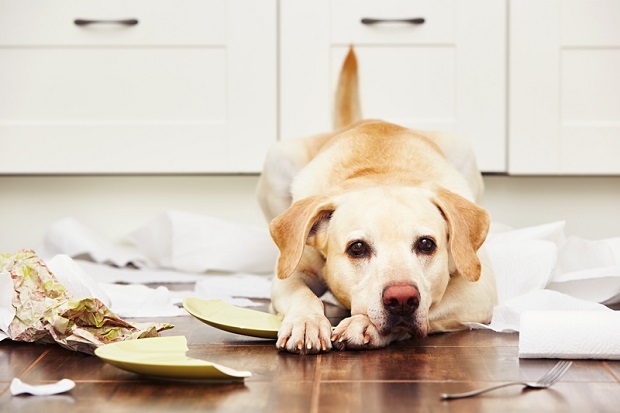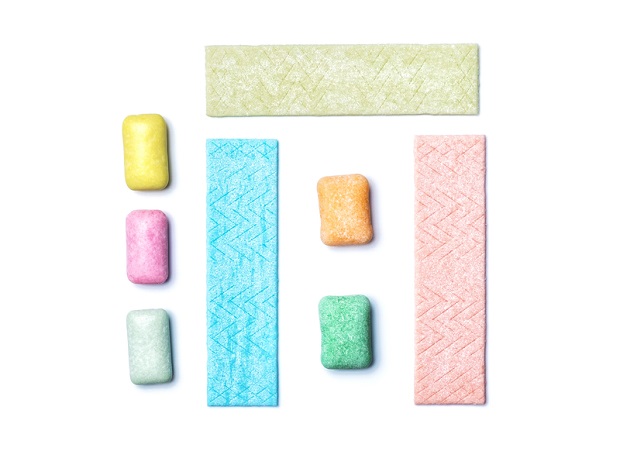The 10 things in your home most likely to poison your pet

Jaromír Chalabala | Dreamstime.com
Your dog has that guilty look on their face and you know they’ve eaten something they shouldn’t. Here are the 10 most common things that send a pet to the vet with a serious problem.
Words Nadene Hall
Some animals are never a problem. My five year old border collie-blue heeler cross Evie has been to the vet just a couple of times in her life, for general health checks and vaccines.
However, her younger dog-sister Mel is such a regular visitor, all the vet clinic staff know her by sight. Mel has managed – despite stringent fencing and close supervision – to eat snail bait, cable ties, clothing (always expensive), plastic pegs, rubber toys, so many shoes I’ve lost count, and on her last visit, an entire loaf of fruit bread.
That last one might not seem a big deal, but fruit bread is full of sultanas. Grapes (raisins, sultanas) are toxic to dogs, for unknown reasons.
Worse, Mel has a genetic kidney condition; grapes, sultanas, and raisins can cause kidney failure. I discovered what she’d done within minutes and rushed her to the vet. It was 42 minutes from the time she wolfed down all that bread, to the time they administered a special vomit-inducing eye drop and she threw it back up.
The vet brought a blinking, sorry-looking Mel back into the consulting room.
“It was impressive,” she told me. “She threw up a bakery.”
Dogs and cats eating toxic foods is a big problem over the holidays when food is more likely to be accessible and pets may not be as closely supervised. In the US, over 200,000 pets need vet care after eating something toxic every year. These are the 10 most common household items pets eat that can cause serious health problems, or even death.

Photo: Fotyma | Dreamstime.com
THE 10 MOST COMMON TOXINS INGESTED BY PETS IN THE US IN 2018
OVER-THE-COUNTER MEDICATIONS: 19.6% OF CASES
This is everything from pain medications such as ibuprofen, to antihistamines, herbal supplements, and vitamins.
HUMAN PRESCRIPTION MEDICATION: 17.5% OF CASES
Not far behind are prescription medicines, mostly antidepressants, and heart medication.

Photo: Iurii Stepanov | Dreamstime.com
FOOD – GENERAL: 11.4% OF CASES
This includes grapes and raisins, onions, and garlic. Another big cause was ingestion of the artificial sweetener xylitol, found in products such as sugar-free gum and lollies, chewable vitamins, some baked goods, protein bars, and some toothpaste.
CHOCOLATE: 10.1% of cases
Chocolate contains theobromine, which is toxic to dogs. Cocoa powder, dark chocolate, and baking chocolate have the highest levels.
VETERINARY PRODUCTS: 9.3% of cases
Pet medications are usually flavoured to make them more palatable to pets. They can cause serious issues if the pet eats an entire packet or container.
HOUSEHOLD ITEMS: 7.3% of cases
Paint, glue, cleaning products, and dishwasher products aren’t as palatable, but still make up a large proportion of vet visits.
RODENTICIDES: 6.3% of cases
Rat bait is very palatable to pets and can cause toxicity or even death. Symptoms may not appear for hours, and a lot of internal damage may occur before you realise there’s an issue.
INSECTICIDES: 6.2% of cases
This includes baits for ants and bug spray.
PLANTS: 5.5% of cases
This includes azaleas, rhododendrons, oleander, daylilies, daffodils, and tulips. Some have toxic foliage; others cause issues when cats and dogs eat bulbs or tubers.
GARDEN PRODUCTS: 2.3% of cases
A common problem in NZ is slug-snail bait. However, fertiliser pellets, bone meal, and compost can also cause serious health issues, especially if an animal is already compromised, eg elderly, ill.
WHAT TO DO IF YOU THINK YOUR PET HAS EATEN SOMETHING TOXIC
- Call your vet or an emergency vet.
- Tell them what the dog or cat has eaten, how much, and when – if you’re unsure, take a sample of the plant or item, packaging and/or photos of it with you to the vet.
- Report any symptoms such as vomiting, shaking, hyperactivity, depression.
If your animal has just ingested something, don’t wait for symptoms – the sooner you can get it to a vet, the more options they have in terms of successful treatments. If it’s within minutes to an hour or so since they ate it, it may be as simple (and as cheap) as making the animal vomit, depending on the toxic ingredient.
In Melanie’s cases, I’ve realised what she’s done within minutes, taken her straight to the vet, and it has cost around $85 a time, making her easily the most expensive dog I’ve ever owned. It’s also why if you ever visit, you’ll see some odd things in my house: bread is in a steel bin on a high shelf; dirty laundry is in a locked room; every shoe is either above head height or in a cupboard.
READ MORE
Pets get poisoned too – NZ Poison Centre
8 Christmas favourites that may make your pet sick

